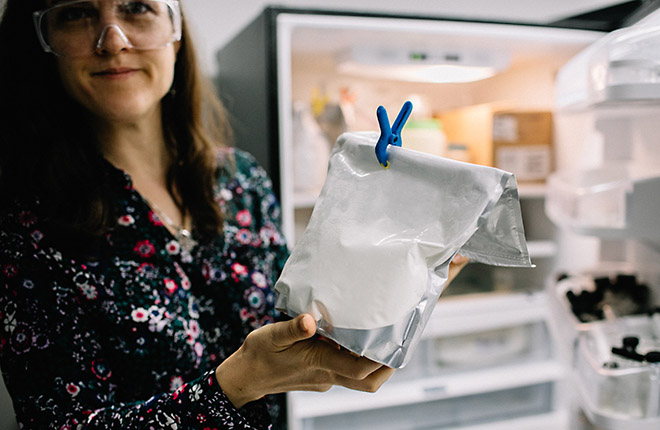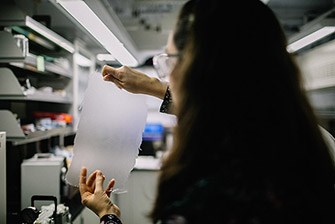That’s a Wrap: Edible Food Wraps from ARS
Some things seem to get better with time.
Thanks to two Agricultural Research Service (ARS) chemical engineers in Wyndmoor, Pennsylvania, that could be said of the food coatings and films that one of them developed as food wraps more than 10 years ago.
|
|
The products, initially created by Peggy Tomasula, are made from casein proteins commonly found in milk. Tests by Tomasula and colleague Laetitia Bonnaillie have since shown that the casein wraps are up to 500 times better at keeping oxygen out of food packaging than traditional petroleum-based wraps. Oxygen exposure is a major reason why foods spoil.
In recent work, they’ve shown that adding an alkali compound to the wrapping material makes it stronger; more resistant to humidity, temperature, and moisture; and “stretchier,” Bonnaillie says.
The material looks like most commercially available plastic food wraps, but because the casein wraps are made from milk proteins, they are edible.
“That feature adds to the material’s appeal because it will reduce the amount of food-wrapping waste that goes into landfills,” Tomasula says. The edible films could be used to wrap individual foods that go inside an outer plastic bag or cardboard box, like cheese sticks. Single-serve snacks are becoming more popular, and they use up a lot of inner packaging, she says.
The scientists’ edible films have been the focus of extensive news reports over the years, but the latest improvement (adding the alkali compound) is just one way that they’ve enhanced the product in the last decade. Other additives have included pectin, a natural food product that appears to form a fishnet-like network around the casein particles and makes for a stronger film.
So far, they’ve made the wraps into tea bag-like pouches to hold powdered soup and instant coffee, and they’ve made them more resistant to water and fat so they can be applied directly to cheese sticks and candies. The casein formulation can also be sprayed on dry cereals to replace sugar coatings, and it will keep the cereal crunchy in milk. The treatment also could add protein to the cereal, as well as colors and flavorings to enhance its appearance and taste, Tomasula says.
The researchers’ efforts at ARS’s Dairy and Functional Foods Unit are paying off: The wrap is attracting considerable interest from the private sector, and the agency is pursuing its options in licensing the technology.
Because casein proteins are extracted from milk, there’s no U.S. Food and Drug Administration approval required for using them as a food wrap or an edible product. But ideally the films should be used with other dairy products, or labeled with an allergy warning if used with other foods, because milk proteins like casein are allergens.
The researchers plan to continue refining the film’s process and formulation to make it more versatile.
“Our goal is to design edible films that can be used to protect food anywhere: in warehouses, on store shelves, in refrigerators or at room temperature, or even outdoors in hot and dry climates or humid areas,” Bonnaillie says.—By Dennis O’Brien, ARS Office of Communications.
Key Facts
- ARS reformulated food wraps from casein, a milk protein.
- The films can enhance taste, appearance, and nutritional qualities.
- The films are made from milk proteins, are edible, and reduce waste.
- Commercial interest has led to productive partnerships.
Full Story









